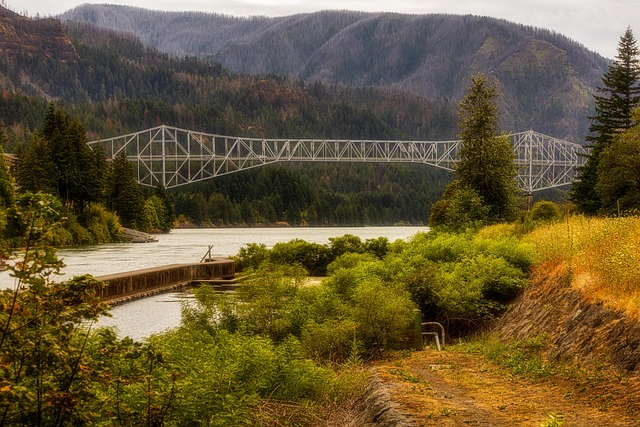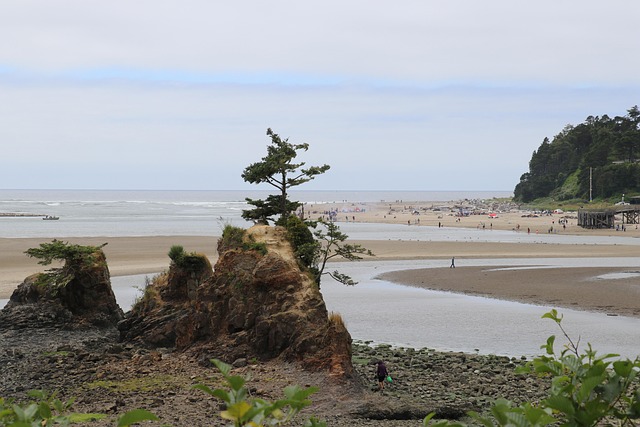The Oregon Gold Rush (1840s-1860s) dramatically transformed Lane County's demographics and history, drawing diverse prospectors from around the world who were captivated by the region's captivating landscapes and abundant natural resources. This period left a lasting cultural impact with a mix of ages, ethnicities, and backgrounds, fostering a vibrant community focused on mining before economic shifts post-rush. Today, Lane County remembers this chapter as a significant part of its heritage shaped by pioneering Lane County prospectors.
“Uncover the captivating story of Lane County, Oregon, during the frenzied days of the gold rush era. This article delves into the demographic transformations that occurred as hundreds of Lane County prospectors flocked to the region, drawn by its geographic allure. From the initial burst of ethnic diversity among early settlers to the subsequent socio-economic shifts, we explore how this historical event shaped the county’s population dynamics. Discover the unique timeline and profound impacts that left an indelible mark on the area.”
- Historical Context: Oregon Gold Rush Timeline
- Lane County's Geographic Allure to Prospectors
- Demographic Shifts Post-Gold Rush
- Ethnic Diversity Among Early Settlers
- Age Distribution of Prospecting Communities
- Socioeconomic Impact on Local Population
Historical Context: Oregon Gold Rush Timeline

The Oregon Gold Rush, which spanned from the late 1840s to the early 1860s, significantly impacted the demographics and history of Lane County. The rush began in 1848 with the discovery of gold at Sutter’s Mill in California, prompting a wave of migration throughout the West, including Oregon. Lane County, located in the heart of the state, became a popular destination for prospectors seeking their fortunes.
In the early years of the rush, the county saw an influx of diverse individuals from various backgrounds. Many arrived by sea, with Portland serving as a major port, and others traveled via land routes. Prospectors came from across America and even overseas, contributing to a multicultural environment. This period marked a significant turning point in the region’s history, transforming Lane County from a relatively isolated area into a bustling hub of activity fueled by the allure of gold.
Lane County's Geographic Allure to Prospectors

Lane County, Oregon, with its picturesque landscapes and diverse terrain, held a powerful allure for gold prospectors during the rush era. The county’s geographic features, characterized by rolling hills, dense forests, and the sparkling waters of rivers like the McKenzie and Willamette, provided an inviting backdrop for those seeking fortunes in gold. Prospectors were drawn to these uncharted territories, hoping to discover rich veins of gold that could change their lives forever.
The diverse geography of Lane County offered a range of opportunities for prospectors with varying skills and preferences. Some ventured into the rugged mountains, while others explored the fertile valleys and riverbanks. The county’s abundance of natural resources, including timber and mineral-rich soil, further fueled the influx of people seeking their place in the sun during this thrilling period.
Demographic Shifts Post-Gold Rush

After the initial frenzy of the gold rush subsided, Lane County experienced significant demographic shifts. The influx of prospectors from around the globe had temporarily boosted the population, but as mining operations became more established and less lucrative, many newcomers moved on to other opportunities. This left behind a more diverse yet somewhat aged population compared to the earlier days of the rush.
The remaining residents began to diversify their economies, moving beyond gold mining. Some turned to farming, taking advantage of the fertile valleys, while others sought jobs in emerging industries like lumber and manufacturing. These post-gold rush years saw the county’s demographics stabilize as a new sense of community took root, shaped by those who chose to stay and build a life beyond the fleeting promise of gold.
Ethnic Diversity Among Early Settlers

Lane County’s gold rush era attracted a diverse group of settlers, with individuals from various ethnic backgrounds flocking to the region in search of fortune. Among the early prospectors, one could find Americans, Europeans, and even people from as far away as China, all united by the allure of gold. This melting pot of cultures created a vibrant community, where different traditions and languages intermingled with the shared goal of striking it rich.
The ethnic diversity among Lane County prospectors was not merely superficial; it reflected the global appeal of the American West during this period. The promise of freedom, opportunity, and wealth drew people from all walks of life to the challenging yet promising landscape of Oregon’s gold fields. This cultural mix left a lasting impact on the region, shaping its identity long after the gold rush had faded.
Age Distribution of Prospecting Communities

In the heart of the gold rush era, Lane County in Oregon became a melting pot of diverse ages, drawn by the allure of precious metals. The communities that sprang up around prospecting sites were characterized by a broad age range, with a notable concentration of young adults and middle-aged individuals seeking their fortune. This demographic shift was a testament to the region’s ability to attract both seasoned miners and eager newcomers, all united by the promise of gold.
The energy and enthusiasm of younger prospectors, often in their 20s and 30s, were palpable as they navigated the local landscapes, hoping to strike it rich. Concurrently, experienced miners, who had traversed various gold fields across the country or even globally, contributed their skills and knowledge to the Lane County scene. This diverse age distribution created a vibrant and dynamic community, with each generation bringing unique perspectives and abilities to the pursuit of gold in this picturesque Oregon county.
Socioeconomic Impact on Local Population

The gold rush in Lane County, Oregon, brought a surge of prospectors from all walks of life, significantly altering the region’s demographics and socioeconomic landscape. These pioneers, driven by the allure of wealth, contributed to a diverse yet transient population. Local communities experienced rapid growth as people flocked to the area, seeking their fortune. The presence of lane county prospectors led to the establishment of new towns and an increased demand for goods and services, fostering economic activity.
This period saw a shift in the local economy, with mining operations becoming the primary source of income for many. The gold rush attracted skilled laborers, entrepreneurs, and farmers who established businesses to cater to the needs of prospectors. However, the nature of the industry was unpredictable, leading to financial fluctuations and leaving some residents struggling post-rush. Despite the challenges, the socioeconomic impact on Lane County’s population remains a fascinating chapter in the region’s history.
